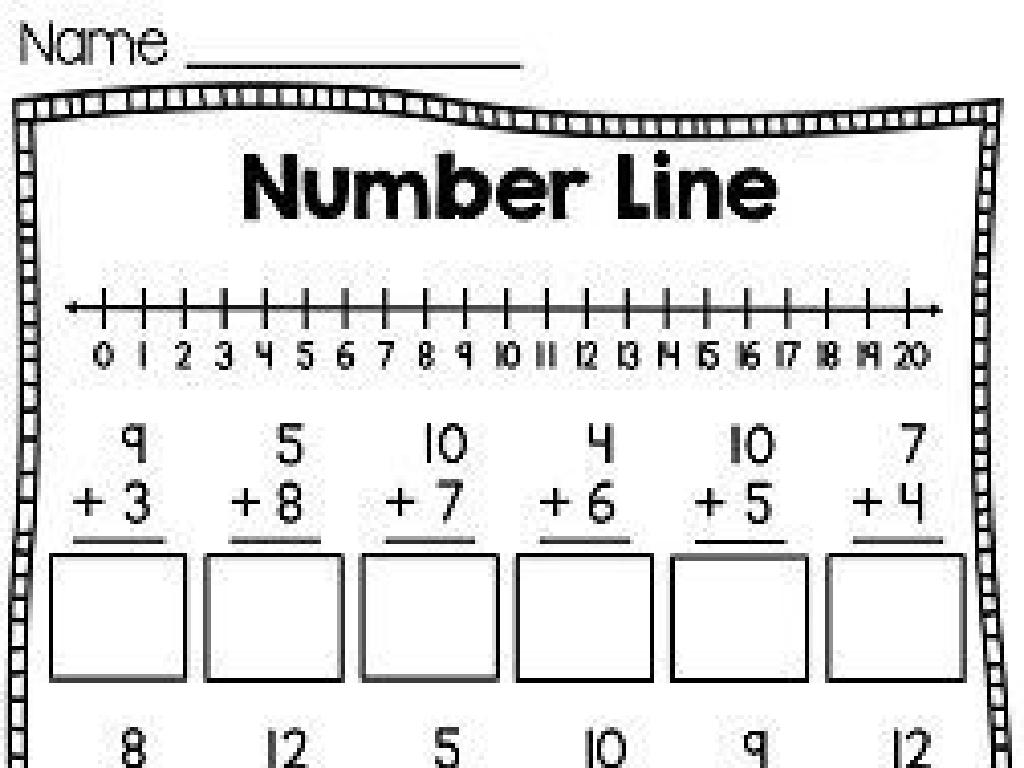Use Evidence To Classify Animals
Subject: Science
Grade: Fifth grade
Topic: Classification
Please LOG IN to download the presentation. Access is available to registered users only.
View More Content
Welcome to Animal Classification!
– Today’s adventure in the Animal Kingdom
– Understanding animal classification
– Sorting animals into groups based on similarities
– Reasons scientists classify animals
– To study and understand how animals are related
– Exploring examples of classification
– For instance, grouping animals by diet: herbivores, carnivores, omnivores
|
This slide introduces the concept of animal classification to the students. Begin by exciting them with the idea of an adventure through the Animal Kingdom, where they’ll learn how to group animals. Explain that classification is like organizing your toys into different bins. Scientists classify animals to understand their relationships, behaviors, and environments better. It helps them communicate about animals and make predictions about them. Provide examples of classification, such as grouping animals by what they eat or where they live. Encourage students to think of their own examples of animal groups. This will set the stage for more detailed lessons on the specific categories and characteristics used in animal classification.
Exploring Classification in Science
– What is classification?
– It’s sorting living things into groups.
– Why classify living things?
– Helps us understand and study biodiversity.
– Classification in daily life
– Like sorting laundry or organizing books.
– How we classify animals
– Using evidence like habitat, diet, and features.
|
This slide introduces the concept of classification, which is the process of sorting living things into groups based on their similarities and differences. Emphasize the importance of classification in understanding the vast diversity of life and making the study of organisms manageable. Provide relatable examples such as how we organize clothes or books to help students grasp the concept. Discuss how scientists classify animals based on various types of evidence, such as where they live (habitat), what they eat (diet), and their physical characteristics (features). Encourage students to think of their own examples of classification and how it helps them in their daily lives.
Exploring the Animalia Kingdom
– The Five Kingdoms of Life
– Life is categorized into five kingdoms: Monera, Protista, Fungi, Plantae, and Animalia.
– Zooming in on Animalia
– Animalia includes all animals, from insects to mammals.
– Traits of Animalia Kingdom
– Animals in this kingdom are multicellular, eat organic food, and move.
– Classifying Animals
– Using traits to group animals, like mammals having fur and warm blood.
|
This slide introduces the concept of the Five Kingdoms of Life, with a special focus on the Animalia Kingdom. Begin by explaining the broad classification of life forms into five kingdoms, which helps scientists organize and understand the diversity of life. Then, narrow down to the Animalia Kingdom, which encompasses all animal species. Highlight the key characteristics that define this kingdom, such as being multicellular, consuming organic materials for energy, and having the ability to move at some point in their life cycle. Emphasize the importance of these traits in classifying animals into smaller groups, such as mammals, birds, reptiles, etc. Encourage students to think of examples of animals that fit into the Animalia Kingdom and how they can be further classified based on their traits.
Evidence for Animal Classification
– Understanding scientific evidence
– Evidence is data that supports a conclusion.
– Evidence types for classification
– Physical traits, behaviors, and living areas are key.
– Examples: Structures, Behaviors, Habitats
– Fins for swimming, nests for birds, jungle homes.
– Classifying animals activity
|
This slide introduces the concept of using evidence to classify animals, a fundamental aspect of scientific study in biology. Start by explaining what evidence means in science: data or information that supports a conclusion or theory. Then, discuss the different types of evidence used to classify animals, such as physical characteristics (body structures), behaviors (how they act), and habitats (where they live). Provide clear examples for each type, like fins for fish, birds building nests, and animals that live in specific environments like jungles or deserts. Conclude with an activity where students will classify animals based on different types of evidence provided to them. This will help solidify their understanding of the concept.
Classifying Animals Together
– Group Activity: Classify an Animal!
– Use Evidence to Decide
– Look at traits like habitat, diet, body structure
– Share Findings with Class
– Explain how you classified the animal
– Discuss Our Reasoning
– Why did you place the animal in that group?
|
This slide introduces a group activity where students will work together to classify an animal. Provide each group with pictures or descriptions of various animals. Students should use evidence such as the animal’s habitat, diet, and body structure to classify them into groups like mammals, reptiles, birds, etc. After classifying, each group will share their findings with the class and discuss the reasoning behind their decisions. Encourage students to ask questions and think critically about the classification process. This activity will help them understand the importance of using evidence to make scientific decisions and how to communicate their reasoning effectively.
Classifying Animals: Vertebrates vs. Invertebrates
– Vertebrates have a backbone
– Animals like fish, birds, and humans have backbones
– Invertebrates lack a backbone
– Insects, jellyfish, and worms are invertebrates
– Examples of each group
– Backbone affects animal classification
– Determines the main groups in animal kingdom classification
|
This slide introduces the fundamental classification of animals into vertebrates and invertebrates, based on the presence or absence of a backbone. Vertebrates include animals with a well-defined skeletal structure, such as mammals, birds, reptiles, amphibians, and fish. In contrast, invertebrates, which make up the majority of animal species, lack this internal structure and include insects, arachnids, mollusks, and more. Understanding this distinction is crucial for students as it forms the basis for further classification and study of animal biology. Encourage students to think of examples from each group and consider how this difference in physical structure might influence the animal’s abilities and behaviors.
Mammals, Reptiles, Birds, Oh My!: Animal Classification
– Characteristics of animal classes
– Mammals have fur, reptiles have scales, birds have feathers.
– Activity: Match animals to classes
– Use pictures of animals to sort them into the correct class.
– Animal classes in the kingdom
– Learn where mammals, reptiles, and birds fit in the larger animal kingdom.
– Discuss: Why classification matters
|
This slide introduces the concept of animal classification to fifth graders. Start by discussing the main characteristics that define mammals, reptiles, and birds. For the activity, provide students with a variety of animal pictures and have them work in groups to classify each animal based on its characteristics. After the activity, guide a discussion on how these classes fit into the broader animal kingdom and the importance of classification in understanding biodiversity and the relationships between different species. Prepare to explain how classification helps scientists communicate and study the natural world more effectively.
Class Activity: Classifying Our Classroom ‘Zoo’
– Pick an animal to research
– Gather evidence on your animal
– Look for habitat, diet, body features, etc.
– Present your animal’s classification
– Explain why your animal belongs to a certain group
– Discuss classification with the class
|
This class activity is designed to engage students with the concept of classification in a fun and interactive way. Each student will choose an animal to research, focusing on gathering evidence about its characteristics such as habitat, diet, and physical features. They will then use this evidence to classify the animal into groups like mammals, birds, reptiles, etc. During the presentation, students should explain the reasoning behind their classification, helping them to practice their critical thinking and public speaking skills. As a teacher, prepare to guide them on how to research effectively and provide a list of animal groups for reference. Possible activities include creating a poster, a PowerPoint presentation, or a short speech. Encourage students to ask questions and discuss the classifications after each presentation to foster a collaborative learning environment.
Conclusion: The Importance of Classifying Animals
– Recap of animal classification
– Significance of classification
– Helps organize and understand diversity
– Classification in the real world
– Used by scientists and in everyday life, like in zoos or nature reserves
– Looking forward to more science
|
As we wrap up, let’s review the key points about animal classification. It’s a system that helps us organize the vast diversity of life by grouping animals based on similar characteristics. Understanding this system is crucial for scientists to study and protect species, and it also has practical applications in the real world, such as managing zoos or natural habitats. Encourage students to reflect on what they’ve learned and how they can apply this knowledge outside the classroom. Get them excited for the next science exploration by hinting at what’s to come and how it builds on what they’ve already discovered about classification.





